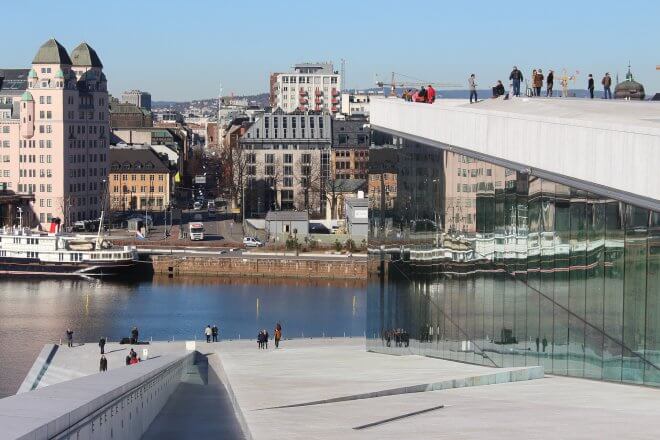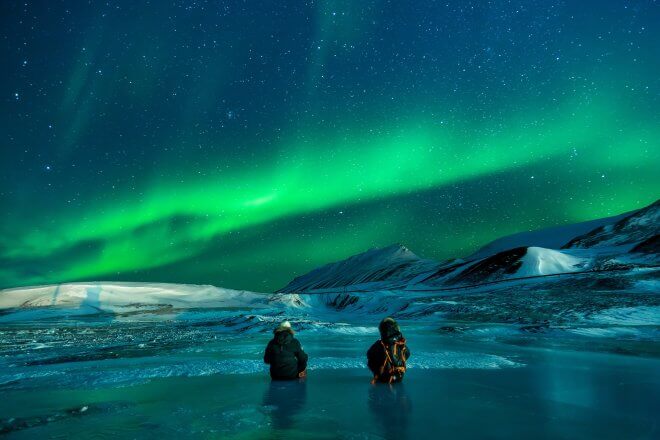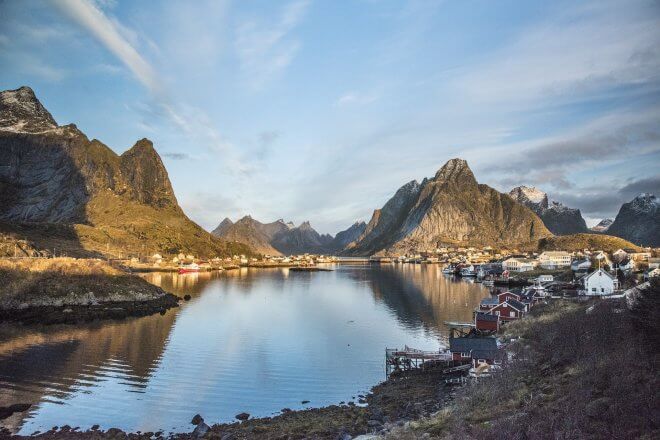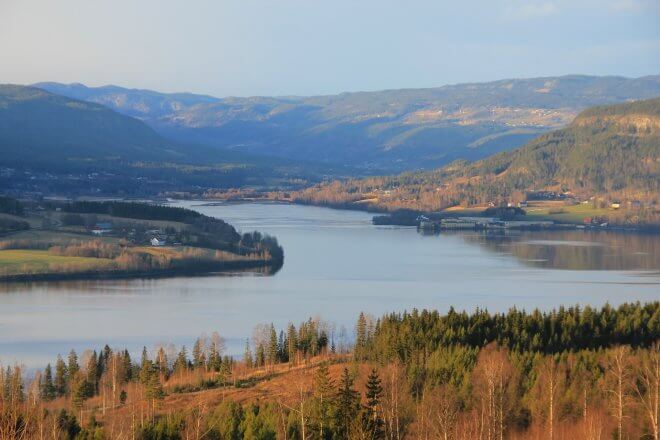Alternative Travel Index Rank: #14
Norway is also in the Top 10 Most Underrated & Eco Travel Destinations
Excels in electricity supply, air transport, and environment protection
Population and tourists density at peak season: 14 (low)
Norway is on a large peninsula shared with Sweden in Northern Europe. In the north, it also borders Finland and Russia. Norway is well known for its amazing and varied scenery. The fjords in the west of the country are long narrow inlets, flanked on either side by tall mountains where the sea penetrates far inland. A major part of the land is a rocky wilderness and thus Norway has vast, totally uninhabited areas, many of which have been converted into national parks (44 across the country). Even outside them, nature dominates the landscape.
Travel Costs
Norway ranks #137/141 for price competitiveness in Justraveling’s Alternative Travel Index. Average travel costs per day: $121 (backpacker) – $358 (mid-range). Cheapest Norwegian cities: Bergen, Kristiansand, Stavanger. Most expensive Norwegian cities: Harstad, Tromso, Trondheim.
Best Time to Go
May-Jun and Aug-Sep are the best time to go to Norway. Due to the gulf stream, summers can be moderately warm (up to 30°C), even in northern areas, but only for limited periods. If you like snow, go to Norway in Dec-Apr.
Places to Visit
Oslo is one of the largest capitals in the world by area. Most of this is forest, making Oslo a city in close contact with the nature surrounding it. It has great museums, a beautiful setting and a lively nightlife and cultural scene.
Ålesund is located on a row of islands extending towards the Atlantic. The compact Art Nouveau city centre is thus surrounded by water and Ålesund is a major fisheries harbor. Walk up the stairs to Fjellstua from the city park for a breathtaking view of local fjords and mountains.
The Norwegian archipelago of Svalbard is the northern-most settlement in the world with a permanent civilian population. Seven national parks and 23 nature reserves cover two-thirds of the archipelago, protecting the largely untouched, yet fragile and vulnerable, natural environment.
Lofoten is a group of islands in the northern part of Norway. With its small fishing villages nestled in fjords, dotting a very rugged coast with abrupt peaks rising directly from the ocean, the archipelago is often described as one of the most scenic parts of Norway. Here you can also experience the Aurora Borealis.
Travel Ideas and Things to Do
Norway’s national cycle routes are quite possibly the best way to visit its many fjords and mountains. The Atlanterhavsveien in particular, is connected with spectacular bridges surrounded by the wilderness of the Atlantic Ocean.
Oppland is an inland county of Norway characterizied by rows of mountains and valleys, extending from the ocean accessible lowlands around Oslo up to the high plateaus and mountain peaks of central Norway. The Grønolen Fjellgard mountain lodge can be the ideal base point for excursions all over the area.
Trøndelag, in central Norway, holds the perfect scenery for experiencing the great outdoors. Your only daily problem here will be to decide whether to go fishing, hiking, cycling or climbing, just to mention a few. More info here.
Lying between Oslo and Bergen, the Hardangervidda mountain plateau is criss-crossed by a vast network of marked trails. If you don’t mind spending 12 days in Norway’s wild nature, try this 300 km hut-to-hut round trip in July/Aug.
Embrace sustainable tourism with a free working holiday in the roadless hamlet of Flørli (Lysefjord) or at a biodynamic farm in central Norway.
More active travel ideas for your next trip can be found in the Hiking Series. Check out these five routes to enjoy an awesome day hike in Norway.
This Travel Guide is a work in progress. Improve it with a Norwegian touch!
- Browse All European Destinations
- World’s Best Alternative Travel Destinations
- Trip Planning: Inspiration, Budget, Flights, Accommodations, Tools
Sources: some text excerpts from Wikitravel & Wikipedia; travel cost data from Numbeo.




